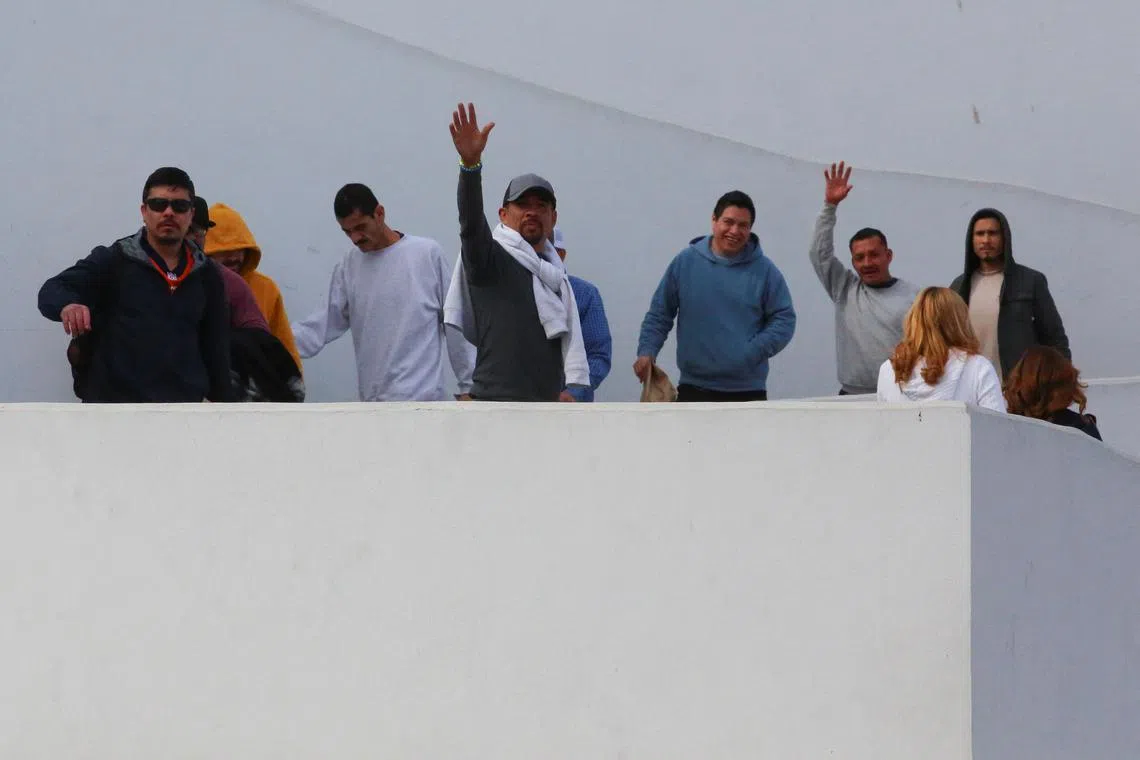Inside the plan to receive thousands of Mexicans deported from the US
Sign up now: Get ST's newsletters delivered to your inbox

Mexico City, the capital, is likely to end up receiving many of the returnees.
PHOTO: REUTERS
Emiliano Rodriguez Mega and Annie Correal
Follow topic:
MEXICO CITY – Mexico’s plan to receive thousands of its deported citizens from the United States is nothing short of ambitious. Plans are under way to build nine reception centres along the border – massive tents set up in parking lots, stadiums and warehouses – with mobile kitchens operated by the armed forces.
Details of the initiative – called “Mexico Embraces You” – were revealed only this week, although Mexican officials said they had been devising it for the past few months, ever since Mr Donald Trump pledged to conduct the largest expulsion of immigrants in US history.
Nearly every branch of government – 34 federal agencies and 16 state governments – is expected to participate in one way or another: busing people to their hometowns, organising logistics, providing medical attention, enrolling the recently returned in social welfare programmes like pensions and paid apprenticeships, along with handing out cash cards worth about US$100 (S$135) each.
Officials say they are also negotiating agreements with Mexican companies to link people to jobs.
“We are ready to receive you on this side of the border,” Mexico’s Interior Minister Rosa Icela Rodríguez, said at a news conference this week. “Repatriation is an opportunity to return home and be reunited with family.”
President Claudia Sheinbaum of Mexico has called the expected large-scale deportations a “unilateral move” and has said she does not agree with them. But as the country with the single largest number of unauthorised citizens living in the United States – an estimated 4 million people as of 2022 – Mexico has found itself obligated to prepare.
The government’s plan is focused on Mexicans deported from the United States, although the president has indicated the country could temporarily receive foreign deportees, too.
Mexico is not alone in preparing: Guatemala, its neighbour to the south that also has a large population of immigrants in the US without legal permission, recently rolled out a plan to absorb its own deportees.
While Mexico’s foreign minister spoke by phone to the new US Secretary of State Marco Rubio, this week about immigration and security issues, Mexico and other countries in the region have said that they have not been briefed by the Trump administration on its deportation plans, leaving them to scramble in the absence of any specifics.
“The return of Donald Trump again finds Mexico unprepared to face these scenarios,” said Mr Sergio Luna, who works with the Migrant Defence Organisations’ Monitoring Network, a Mexican coalition of 23 shelters, migrant houses and organisations spread across the country.
“We can’t keep responding to emergencies with programs that may have the best intentions but fall absolutely short,” Mr Luna said. “What this shows is that for decades Mexico has benefited from Mexican migrants through remittances, but it has resigned this population to oblivion.”
Moreover, while the government has a fleet of 100 buses to take deportees back to their home states, many of them had fled those places to escape violence and a lack of opportunities in the first place.
Other experts wondered if the Mexican government was really prepared to deal with the long-term trauma that deportations and family separations might cause.
“These people are going to come back and their return is going to have an impact on their mental health,” said Ms Camelia Tigau, a migration researcher at the National Autonomous University of Mexico.
Even with the new facilities, existing shelters – often small and underfunded – may be hard-pressed to serve large numbers of recently arrived people along with the usual population of migrants from the south hoping to cross the US border, shelter operators said, even though the number of migrants has dropped drastically in recent months.
“We can’t prepare because we don’t have financial resources,” said Ms Gabriela Hernandez, the director of the Casa Tochan shelter in Mexico City, adding that her team mostly relies on donations from everyday citizens. “So we consider this to be an emergency. It’s like an earthquake.”
Other shelter operators in Mexico City said they had not been offered extra support from the government.
Mexico City, the capital, is likely to end up receiving many of the returnees
“It is a good thing that the Mexican government is planning for the initial reception,” said Ms Claudia Masferrer, a migration researcher who has studied return dynamics from the United States to Mexico and their implications. Still, she added, “it is important to think about what will happen afterwards, in the following months”.
Mr Temístocles Villanueva, Mexico City’s chief of human mobility, said in an interview that officials planned to create new shelters and nearly triple the capital’s capacity to house migrants and deportees – to more than 3,000 from about 1,300.
Those who work with migrants and the deported are also concerned that Mexico and other countries in the region could be hobbled in their efforts to receive large numbers of people if the Trump administration halts the disbursement of foreign aid, as Mr Rubio said on Jan 21 that it was starting to do, after an executive order signed on Jan 20 by Mr Trump.
“That could translate into a crisis, or at least a temporary weakening of these humanitarian assistance support networks,” Mr Luna said.
Ms Sheinbaum has signalled that Mexico could receive deportees other than Mexicans. She said, however, that her government planned to “voluntarily” return any non-Mexican nationals – including those waiting for asylum hearings in the US – to their countries of origin.
The question of who would pay to return them, she said, was on the list of topics she planned to discuss with US government officials. NYTIMES

